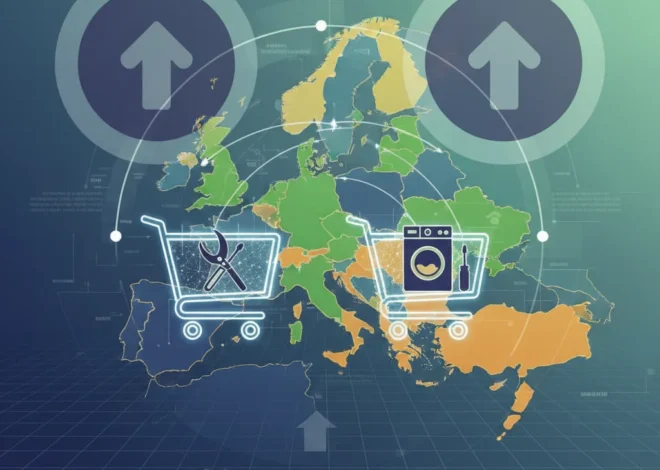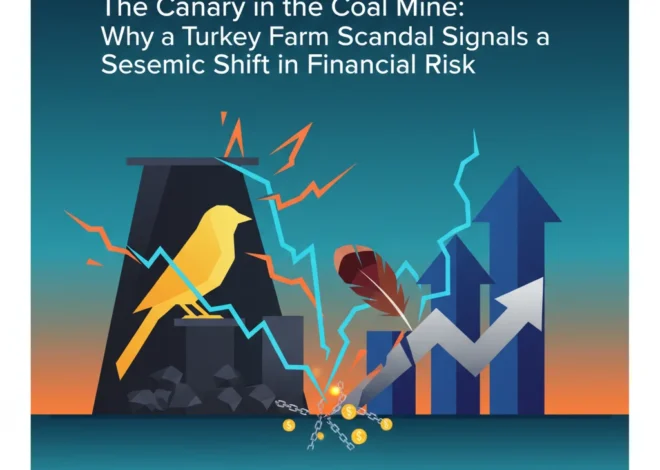
Beyond Greenwashing: The Financial Blueprint for True 24/7 Decarbonisation
The Digital Economy’s Trillion-Dollar Energy Problem
In the modern economy, data is the new oil, and computation is the engine. From high-frequency trading algorithms that execute millions of transactions per second to the complex AI models powering the next wave of financial technology (fintech), our digital world is built on a foundation of immense processing power. But this foundation has a dirty secret: it consumes an astonishing amount of energy. The global stock market, the banking system, and the entire digital economy run on data centers, and these facilities are some of the most power-hungry structures on the planet.
Globally, data centers are estimated to consume 1-2% of all electricity, a figure projected to soar with the proliferation of AI and blockchain technologies. For investors and business leaders focused on Environmental, Social, and Governance (ESG) principles, this presents a significant challenge. How can we reconcile the relentless growth of the digital economy with the urgent need for decarbonisation? For years, the standard answer has involved a portfolio of solutions: purchasing Renewable Energy Certificates (RECs), signing Power Purchase Agreements (PPAs) for wind and solar farms, and investing in carbon offsets. While well-intentioned, these measures often fall short of genuine, 24/7 carbon-free operation.
As Mark Bjornsgaard, Founder of Deep Green, highlighted in a recent letter to the Financial Times, these methods can sometimes be “an accounting trick.” A data center can claim to be “100% renewable” by buying solar energy credits, yet still draw power from a fossil-fuel-burning grid at night. This isn’t true decarbonisation; it’s a balance sheet solution to an engineering problem. The real solution requires a fundamental rethinking of the data center itself—not as a consumer of energy, but as a component in a wider, circular energy system.
The Flaw in the Current “Green” Finance Model
The financial instruments currently used to “green” the tech industry are sophisticated but imperfect. A PPA, for instance, guarantees the purchase of energy from a renewable source, helping to finance new wind or solar projects. This is a crucial part of the energy transition. However, it doesn’t solve the problem of intermittency. When the wind doesn’t blow or the sun doesn’t shine, a data center still needs power. That power is drawn from the local grid, which, in most parts of the world, still relies heavily on natural gas or coal, especially for providing on-demand “peaker” plant power.
This creates a disconnect between a company’s financial accounting for carbon and its actual, real-time environmental impact. For discerning investors and regulators, this gap is becoming a major point of scrutiny. The future of sustainable finance demands more than clever financial products; it demands verifiable, physical-world impact. This is where the concept of “waste heat” enters the economic equation.
A typical data center is an exercise in inefficiency. Up to 40% of the electricity it consumes is used not for computation, but for cooling the servers (source). Processors get hot—very hot—and this heat is treated as a waste product to be vented into the atmosphere at great expense. But what if that heat wasn’t waste? What if it was the primary product, and the computation was the valuable by-product? This simple inversion is the key to a new economic and environmental paradigm.
The Peril of Prosperity: When Economic Blueprints Ignite Geopolitical Firestorms
Recasting Waste Heat: From Liability to Asset
The innovative model proposed by companies like Deep Green turns the traditional data center design on its head. Instead of building massive, centralized facilities that require immense cooling infrastructure, they deploy small, modular “data boilers” at the edge—right where the heat is needed. Imagine a small, secure rack of servers submerged in mineral oil, installed at a local public swimming pool. The servers run complex computations for AI, fintech, or cloud clients. The heat they generate is efficiently captured by the oil and transferred directly into the pool’s water, providing free heating and dramatically cutting the facility’s energy bills.
This approach achieves several goals simultaneously:
- Genuine Decarbonisation: It directly displaces the fossil fuels (often natural gas) that would have been used to heat the pool. This is a direct, measurable reduction in carbon emissions, 24/7.
- Economic Efficiency: It transforms a major operational cost (cooling) into a revenue stream or a valuable service (free heat). This fundamentally alters the economics of high-performance computing.
- Grid Stability: By distributing compute power and creating a useful by-product, it reduces the overall load and inefficiency on the central power grid.
To understand the financial and operational shift, consider the following comparison:
| Feature | Traditional Hyperscale Data Center | Distributed Heat Recapture Model |
|---|---|---|
| Primary Function | Centralized computation | Decentralized computation and heat generation |
| Heat Management | Waste product; requires expensive cooling (chillers, fans), a major operational cost | Valuable asset; captured and sold or provided as a service, displacing other energy costs |
| Energy Sourcing | Draws massive power from the grid; often offset with RECs or PPAs | Draws less power per unit; creates value from >90% of electricity consumed |
| Carbon Footprint | High, with reduction claims based on financial instruments and accounting | Low, with verifiable, direct displacement of fossil fuel consumption |
| Economic Model | Sells compute power; pays for electricity and cooling | Sells compute power; offsets costs or generates revenue by providing heat |
The Investment Thesis: Financing a Circular Digital Economy
This paradigm shift opens up a new frontier for finance and investing. The integration of digital infrastructure with physical-world energy needs creates novel asset classes and investment opportunities that align perfectly with the principles of impact investing.
For finance professionals, this model presents a compelling case. The return on investment (ROI) for a distributed data unit is not solely dependent on the price of compute power. It’s a blended return, factoring in the long-term, stable value of the heat provided. This de-risks the investment from the volatility of the tech market. A bank financing a portfolio of these installations isn’t just funding a tech company; it’s funding essential community infrastructure, like heated pools, residential buildings, and greenhouses.
Furthermore, this approach offers a tangible solution to the “greenwashing” problem that plagues ESG investing. Unlike a carbon credit generated thousands of miles away, the impact of a data boiler is local, measurable, and verifiable. According to one report, data centers in Europe alone produce enough waste heat to provide heating for most of the continent’s residential and commercial buildings (source in German). Unlocking this potential represents a multi-billion dollar opportunity in energy savings and new revenue streams.
The implications for financial technology and trading are also profound. The intense computational demands of machine learning-based trading algorithms and blockchain validation could be met more sustainably and cost-effectively. A quantitative hedge fund could, in theory, co-locate a server cluster with a facility that needs heat, effectively subsidizing its computational expenses. This could reshape the competitive landscape in sectors where processing power is a key differentiator.
The Trillion-Dollar Question: Is High Public spending the Real Threat to Our Economy?
Challenges and the Road Ahead
Despite the compelling logic, the path to widespread adoption is not without obstacles. The primary challenge is logistical. Deploying and maintaining thousands of small, secure data centers across a country is operationally more complex than managing a single, massive campus. Security, both physical and cyber, is paramount and requires robust solutions for a distributed network.
There is also a market education hurdle. Businesses and communities need to understand and trust this new model. Financial institutions need to develop new underwriting models to accurately assess the risk and reward of these hybrid tech-energy assets. The International Energy Agency (IEA) has noted that policy support, such as classifying waste heat as a renewable energy source, could be crucial to accelerating adoption (source).
However, the tailwinds are strong. As the world’s economy becomes more digitized and the pressure for genuine decarbonisation mounts, solutions that elegantly solve both economic and environmental problems will command a premium. The stock market will eventually reward companies that build resilience and efficiency into their core operations, rather than those that simply purchase indulgences to offset their impact.
The 0 Trillion Silent Pandemic: A Financial Blueprint to Avert Global Economic Collapse
Conclusion: Engineering Our Way to a Sustainable Future
True, 24/7 decarbonisation is an engineering challenge, not an accounting one. The most robust and profitable solutions will be those that are grounded in the laws of thermodynamics rather than the loopholes of carbon markets. By reimagining waste heat as a valuable asset, we can create a symbiotic relationship between our digital and physical worlds.
For investors, business leaders, and finance professionals, the lesson is clear: the most profound opportunities in the green transition lie at the intersection of industries. The future of sustainable finance isn’t just about funding wind farms; it’s about funding the innovative systems that integrate renewable energy, computational power, and community needs into a single, efficient, and profitable whole. The humble swimming pool, heated by the calculations of the global financial market, may just be a glimpse of that brilliant future.


